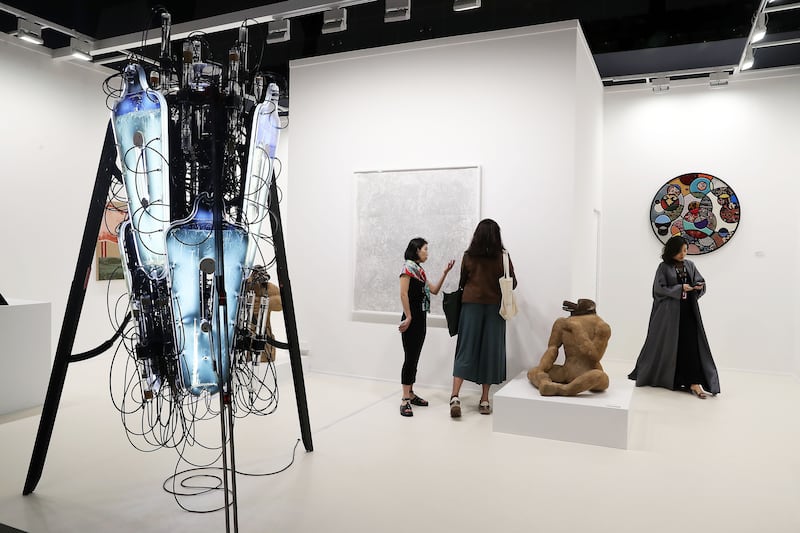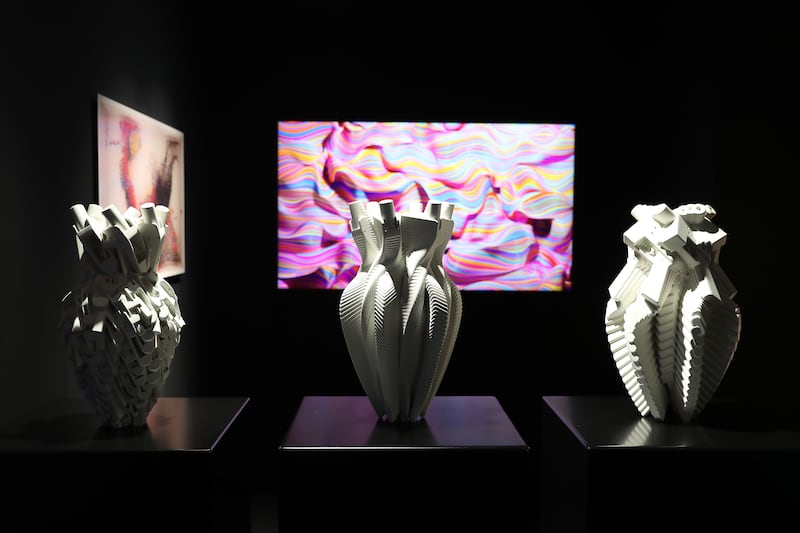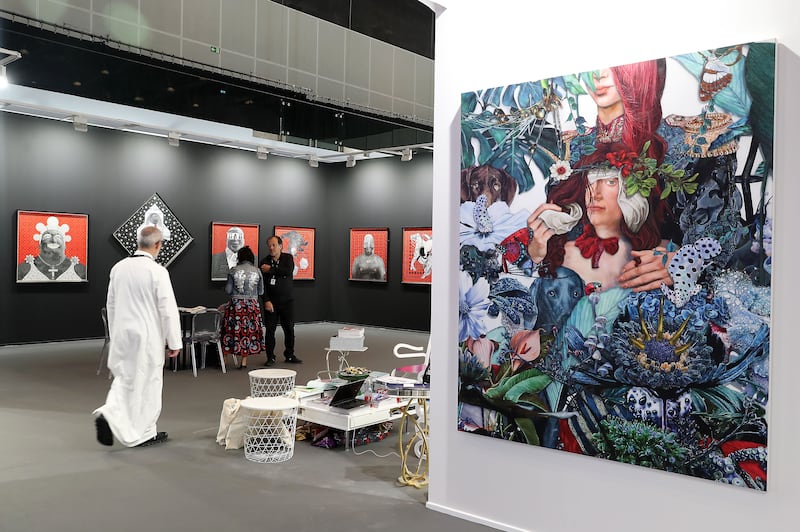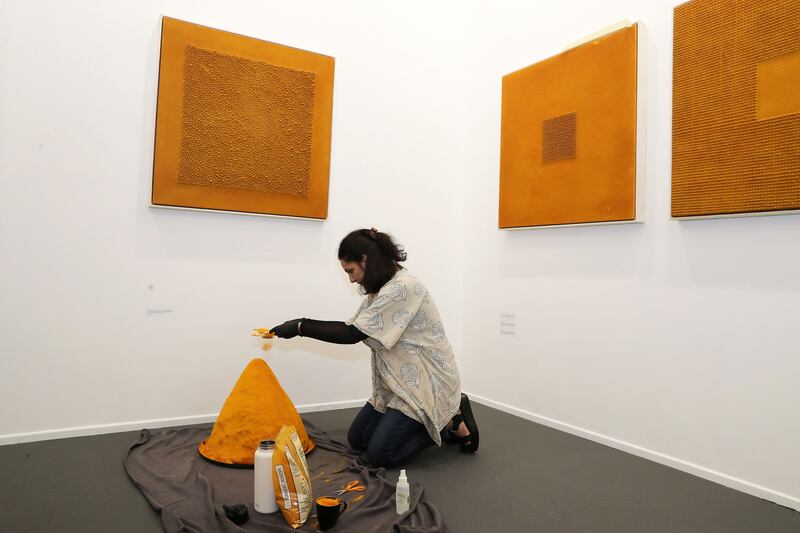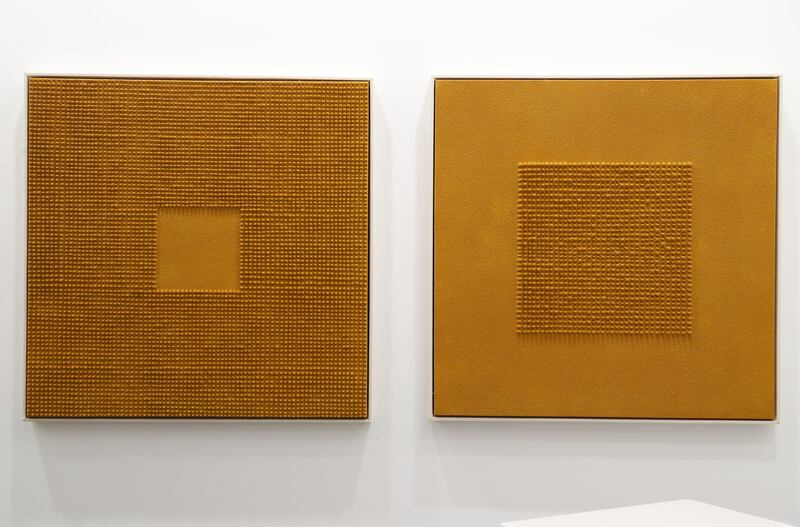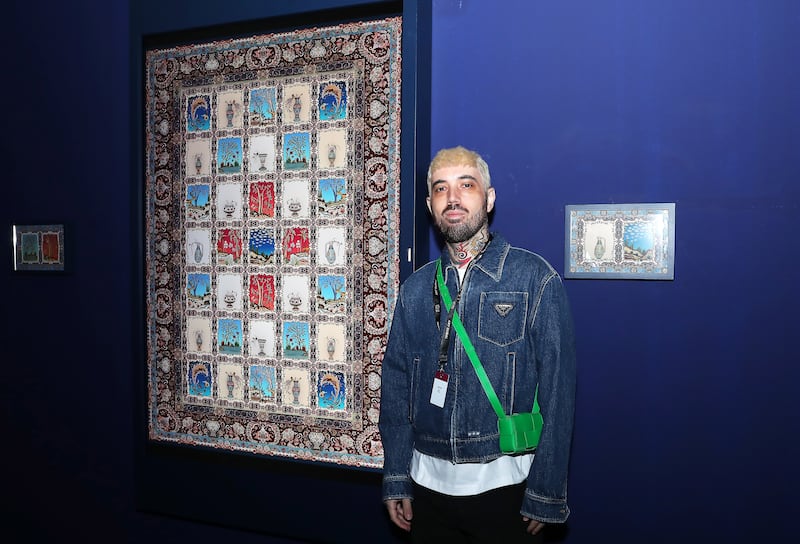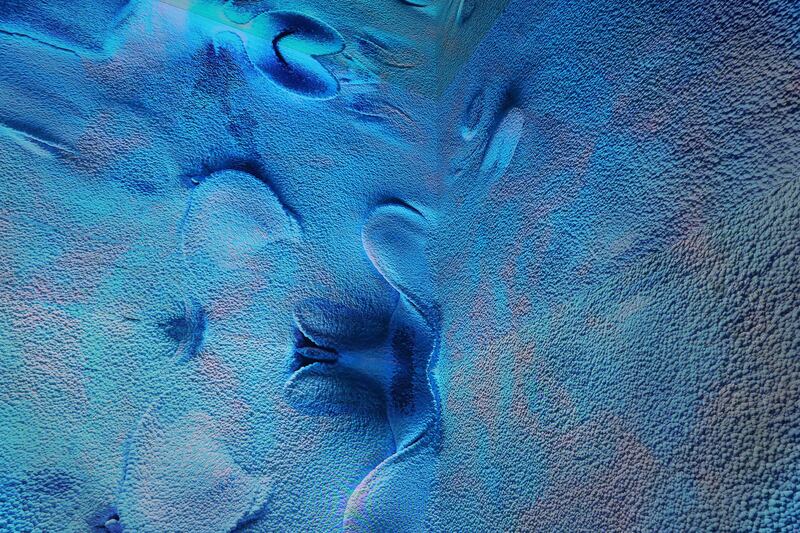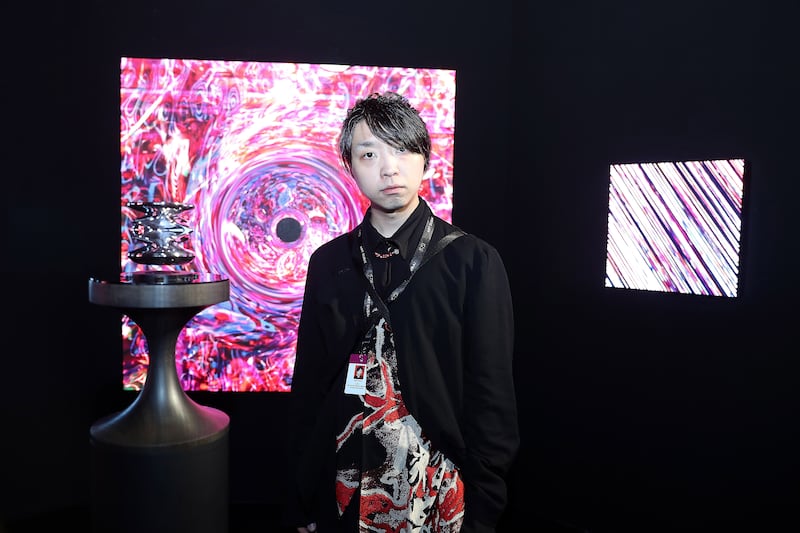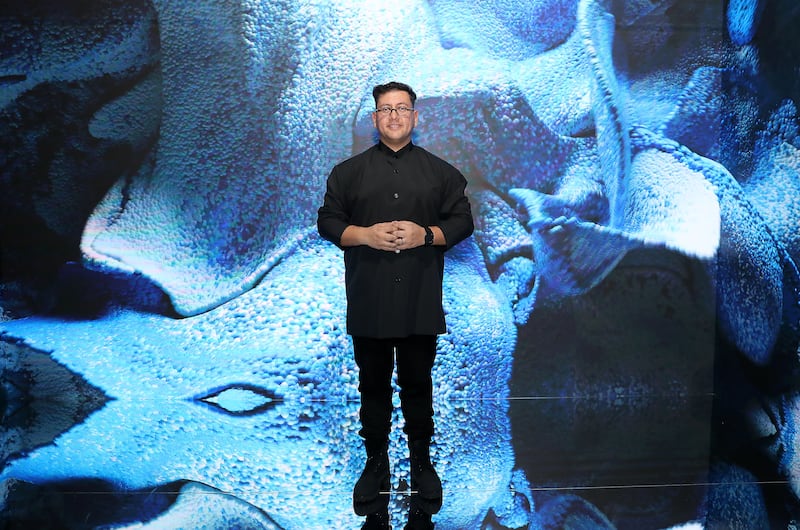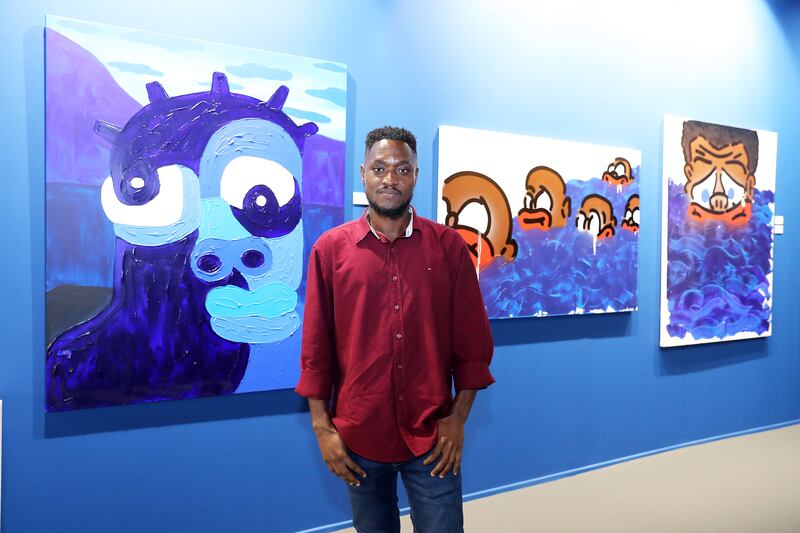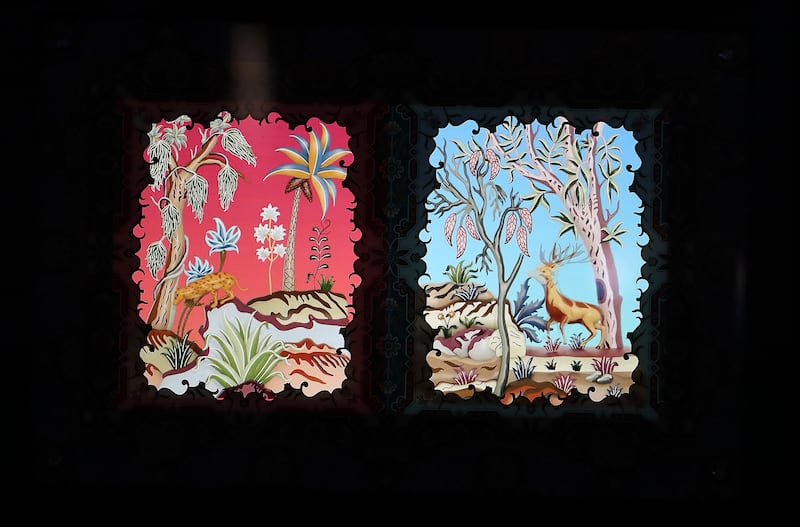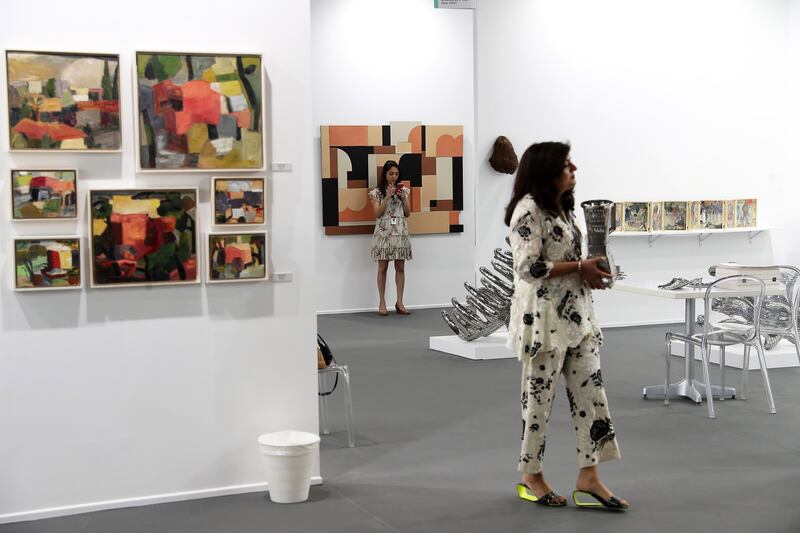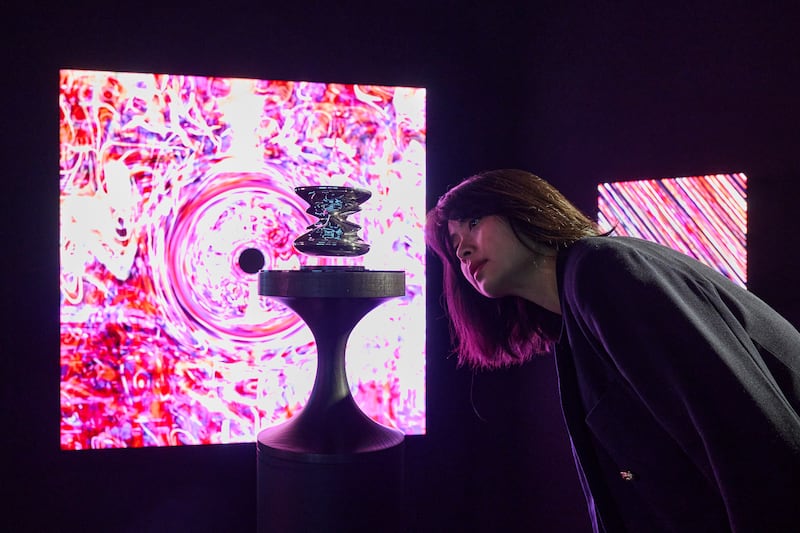Art Dubai has returned for its 16th year with its most ambitious iteration.
Open to the public from Friday to Sunday, the fair is ramping up its representation of creative communities from the Global South. This year's programme is its most extensive, with more than 130 presentations from 40 countries. It is segmented across four sections, including Contemporary, Modern, Art Dubai Digital and Bawwaba, which only features new works.
Several galleries from the UAE and around the world are presenting cutting-edge works in the contemporary section. Among them is Efie Gallery, which is displaying works by a range of African artists, including Isshaq Ismail.
The Ghanaian artist, who is renowned for his polychromatic vibrant works, has reeled in his colour palette for his latest series of paintings. His Serenity portraits revolve around the colour blue — specifically shades that are found in the gemstone lapis lazuli. They show figures with ambivalent expressions, depicted in blues ranging from lighter, paler shades to a deeper azure.
“When I was invited for the residency [at Efie Gallery], I was thinking about new beginnings and new explorations,” Ismail says. “I was also thinking about the precious stone lapis lazuli, which was the point of departure.”
Speaking about his relatively monochromatic approach, especially when compared to his older body of works, Ismail says he was looking to “narrow down my interest and compress everything down to a muted colour palette".
“This body of work is much calmer than previous works in regard to approach," he adds. "It was a little bit slower, building the layers gradually. The previous works were radical and aggressive.”
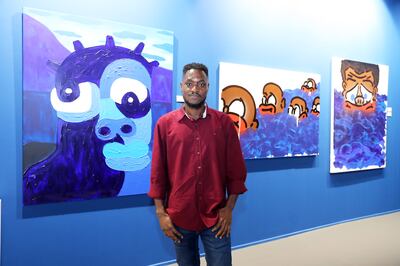
From New Delhi, Shrine Empire Gallery presents works from South Asian artists, which revolve around feminist practices of women who cover their faces with their hair.
Sri Lankan artist Anoli Perera’s I Let My Hair Loose are photographs from the artist’s Protest series. The feature portraits of woman who have all brought their hair down to cover their face.
“It’s a protest against the male gaze,” Shefali Somani, director of the gallery, says. “The hair, which is actually supposed to be an enhancer of beauty, actually becomes a veil, obstructing the view of the face. The photographs are inspired by those Anoli used to see in her grandparents’ home. Her family belongs to the Bergher community, which had strong Anglo influences. You see that influence in the setting.”
Another series of works is Diary Entries by Indian artist Baaraan Ijlal, which take influence from the isolation many felt during the Covid-19 pandemic, but with social undertones unique to India.
Each painting depicts a figure sitting on an armchair with a black backdrop and a carpet laid out by their feet. One of the carpets displays oxygen cylinders, a clear reference to the shortage of medical supplies that shook India during the pandemic.
“She maintained a visual diary during Covid-19, called the Locust Moon Diary,” Somani says. “Baaraan is an artist who addresses a lot of social and political concerns. A lot of these works address the concerns during that time. It was also the idea of being confined to your home and that sense of isolation.”
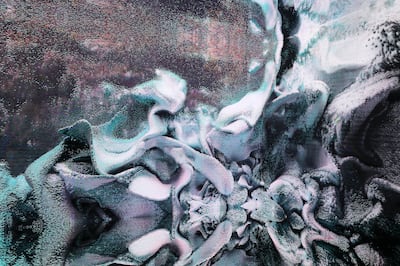
At the Julius Baer Lounge, Refik Anadol is presenting an immersive installation that is reminiscent of his previous work at Noor Riyadh, but instead of relying on data from the Hubble Space Telescope, the Turkish artist finds inspiration in glaciers.
In Glacier Dreams, Anadol relies on artificial intelligence to process troves of visual materials from online and institutional archives, along with personally collected glacier materials in Iceland. The end result is a room with a reflective floor and ceiling, surrounded by screens, where a wealth of glacier visual materials are presented before AI generates, in real-time, bubbling and swirling visuals that envelop the viewer with colours evoking frosty landscapes and lava streams. The visuals are accompanied by audio and olfactory components, which are also generated using AI.
“The project started a year ago,” Anadol says. “This is the first of many versions. This time, it challenged me to look at the new patterns in nature, and not necessarily just put AI into the work, but also be on site recording data. I recorded more than 10 million images in Iceland.
"There are actually 269 different glaciers in Iceland. The AI learns from the 75 million images and then creates new worlds. Simulations of life are a very interesting topic, which will be the next topic for generative AI. I'm trying to imagine the capacity, the limitation of AI and robotics, and where we can feel this barrier between the feeling of being nature or actually physically being in nature.”
Glacier Dreams, Anadol says, also strives to underscore an important environmental concern: climate change.
“When I went to Iceland, unfortunately, 20 per cent of the ice is melting,” he says. “When you are there and you are told that this whole location was 100 metres high and is now gone, it’s a physical experience. Unfortunately, these are the last memories of the glacier. Every year, it’s different. More and more of it is melting.”
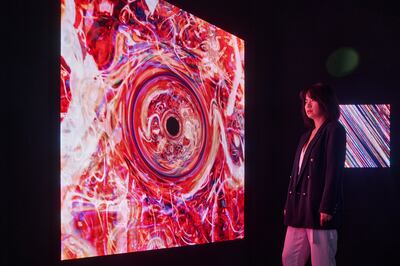
Art Dubai's digital pavilion is returning for its second year with an extensive presentation that features more than 30 first-time participants.
Among them is Yoichi Ochiai. The Japanese artist blurs the lines between the material and digital worlds with his work. Beginning with a reflective amorphous mass, which is suspended on top of magnets, Ochiai then scans and renders the form and its reflections digitally, repeating the process a number of times to create a series of vivid, animated artworks.
“The objects capture the reflective scenery,” says Ochiai. “And then it combines the digital again and again. The loops make more complex pieces and transform the physical object. Data is like a process to gather the noises and phases of the physical world. My interest is in transforming the object from the physical side to the digital side and from the digital to the physical.”
Elsewhere, with A Modern Genesis, Miami-born artist Jason Seife digitally explores the storytelling aspect of regional carpets, particularly the way they depict gardens. The works are based on the design of a Persian carpet that he found and through which he intended to create something new. They are framed with borders alluding to traditional carpet designs, but instead of presenting static scenery, there are deer leaping across lush landscapes and flora bundled in vases rustling with the wind.
“The early works that I made were derivative of carpets that we had at home that were like family heirlooms, carpets from Morocco, Istanbul, Armenia and Iran,” says Seife, who has Cuban, Syrian and Iranian roots. “Over the last few years, in my paintings, I've worked out of completely new designs that I've created. This is the first time in the last few years where I've gotten back and worked off of an existing carpet. With this work, I found a Tabriz carpet and I sculpted it and rendered it in 3D. I wanted to bring something that has been around for centuries and make it new again.”
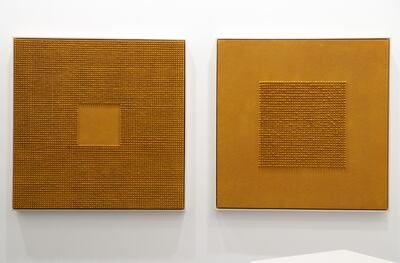
The Bawwaba section, meanwhile, only presents works that have been created in the past two years. While many were completed by the press preview on Wednesday, others were still having finishing touches applied.
Indian artist Gunjan Kumar meticulously sprinkled turmeric on a finely-conical mound of the spice. At first, the title of the series, Sifr, or zero, may bring to mind a sense of nothingness, but Kumar’s work evokes the limitless presence and infinite probabilities that can spring from it. The works hang on the wall, merging flat and textured surfaces with finely-pointed patterns, the tips of which allude to the zero starting point.
“These works are made with nine yellow pigments from various parts of the world, turmeric being one of them,” she says. “They are from Africa, Europe, America and India. Zero is an abstract concept on one side and a factual one on the other. In the eastern sense, zero is associated with spirituality and light, hence the colour yellow.”
As for the conical form that is a motif across the artworks, Kumar says it is inspired by the whirling dances in Sufi tradition. “Zero is a dot and then you rotate it around, it becomes a whirl. The dancer becomes the dance.”
Art Dubai will be open to the public at Madinat Jumeirah from Friday to Sunday
